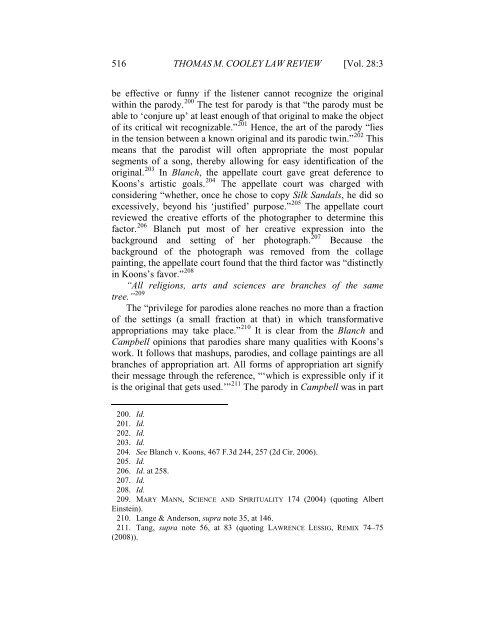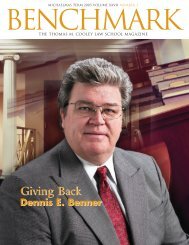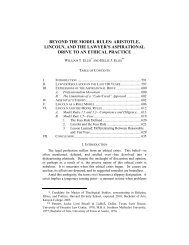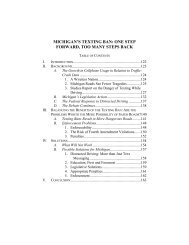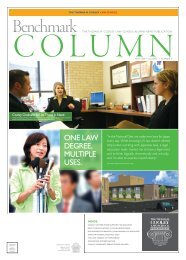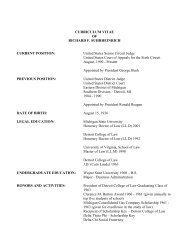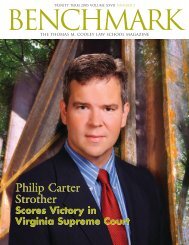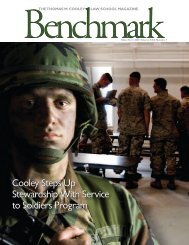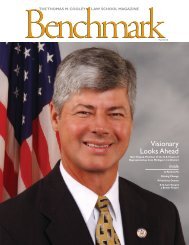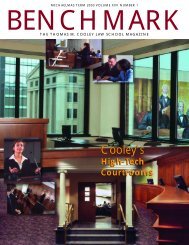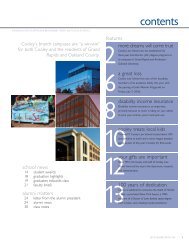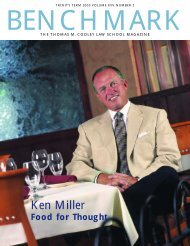Blanch It, Mix It, Mash It - Thomas M. Cooley Law School
Blanch It, Mix It, Mash It - Thomas M. Cooley Law School
Blanch It, Mix It, Mash It - Thomas M. Cooley Law School
Create successful ePaper yourself
Turn your PDF publications into a flip-book with our unique Google optimized e-Paper software.
516 THOMAS M. COOLEY LAW REVIEW [Vol. 28:3<br />
be effective or funny if the listener cannot recognize the original<br />
within the parody. 200 The test for parody is that “the parody must be<br />
able to ‘conjure up’ at least enough of that original to make the object<br />
of its critical wit recognizable.” 201 Hence, the art of the parody “lies<br />
in the tension between a known original and its parodic twin.” 202 This<br />
means that the parodist will often appropriate the most popular<br />
segments of a song, thereby allowing for easy identification of the<br />
original. 203 In <strong>Blanch</strong>, the appellate court gave great deference to<br />
Koons’s artistic goals. 204 The appellate court was charged with<br />
considering “whether, once he chose to copy Silk Sandals, he did so<br />
excessively, beyond his ‘justified’ purpose.” 205 The appellate court<br />
reviewed the creative efforts of the photographer to determine this<br />
factor. 206 <strong>Blanch</strong> put most of her creative expression into the<br />
background and setting of her photograph. 207 Because the<br />
background of the photograph was removed from the collage<br />
painting, the appellate court found that the third factor was “distinctly<br />
in Koons’s favor.” 208<br />
“All religions, arts and sciences are branches of the same<br />
tree.” 209<br />
The “privilege for parodies alone reaches no more than a fraction<br />
of the settings (a small fraction at that) in which transformative<br />
appropriations may take place.” 210 <strong>It</strong> is clear from the <strong>Blanch</strong> and<br />
Campbell opinions that parodies share many qualities with Koons’s<br />
work. <strong>It</strong> follows that mashups, parodies, and collage paintings are all<br />
branches of appropriation art. All forms of appropriation art signify<br />
their message through the reference, “‘which is expressible only if it<br />
is the original that gets used.’” 211 The parody in Campbell was in part<br />
200. Id.<br />
201. Id.<br />
202. Id.<br />
203. Id.<br />
204. See <strong>Blanch</strong> v. Koons, 467 F.3d 244, 257 (2d Cir. 2006).<br />
205. Id.<br />
206. Id. at 258.<br />
207. Id.<br />
208. Id.<br />
209. MARY MANN, SCIENCE AND SPIRITUALITY 174 (2004) (quoting Albert<br />
Einstein).<br />
210. Lange & Anderson, supra note 35, at 146.<br />
211. Tang, supra note 56, at 83 (quoting LAWRENCE LESSIG, REMIX 74–75<br />
(2008)).


